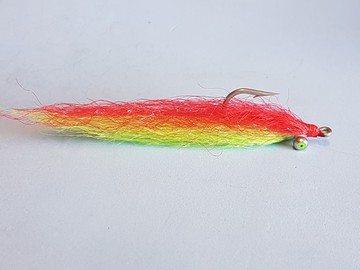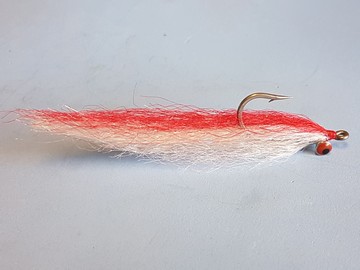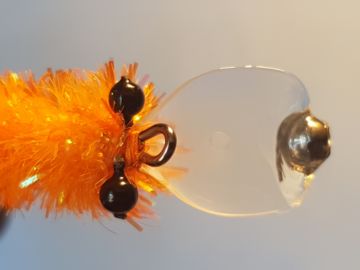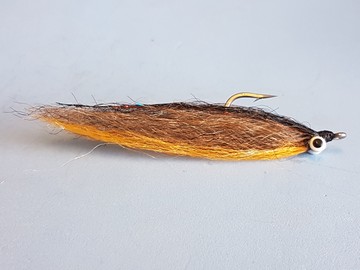Saltwater – estuary
{{start}}
{{end}}
{{+1}}Coastal & Estuary – check list{{-1}}
{{start}}
TRADIRIONAL PLASTERSOL SOFT PLASTICS
Castaic-jerky-j-swimbait-5"
Powerbait Hollow Belly paddle tails
Grub-tail-prawn
Molix RT Shad 4.5"
VIBES
Jackall-transam-95
Samaki-vibelicious-vibe-lure-8-5cm
Zerec-fish-trap 90 & 110mm
Reel-Action-Vibes 95mm with 20gram & 115mm with 45grams
TPE PPRAWNS
Chasebait – flick prawns
HARD BODY LURES
SURFACE LURES
Bassday Sugapen Floating 70mm and 95mm walk the dog style lures
MID WATER LURES
79mm Hank Tuned Jackall Squirrel - sardine
DEEP WATER
Killalure River Rat 20feet
{{end}}
{{+1}}Gladstone – Coastal reefs, rocks and other structure{{-1}}
{{start}}
Mast head and other off shore reefs
Rundle Island (top of Curtis Island)
Facing island reefs including Perl Rocks and Sable Chief
Jenny Lind and Seal rocks
Channel markers
Gear options:
1) General fishing: 15/50 with 30lb braid, 50 flouro and a #4 fastatch clip. This can fish for “big fish” (particularly, barra and King Salmon) using Hard body lures, soft plastics, vibes and bottom bash i.e clip on a bait rig with 50lb paternoster rig and a swivel to connect to the Fashatch.
2) If bottom bashing and trolling is the main fishing method take the two big rods they have 40lb braid and 50lb leaders so can troll with one and have the second one ready to bottom either paternoster or binger directly above the bait.
3) Scrounger outfit: 4-10lb ugly stick with 20lb braid , 25lb flouro, #3 fastach clip. This can be used for scroungers such as snapper, netting cod etc, bream, flathead, grunter and fingermark
4) Barra and King Salmon stinger set up: 15/50 with 30lb braid, 50 fluoro and stinger above #4 fastatch clip.
5) #10weight fly outfit: Intermediate line and 30lb Maxima Ultra green leader plus big fish fly
Don’t forget:
1) If intending to keep table fish take the esky and ice
2) Swivels, lead and hooks for paternoster gigs
3) Hard body lures, soft plastics, vibes
{{end}}

{{+1}}Articulated swimmer – estuary species #2/0 version{{-1}}
{{start}}
This amazing estuary fly tied in Qantas colours of red and white or natural colours of olive and shrimp is like candy to many estuary species. This estuary version is tied on a size #2/0 hook with a 3/16" dumbbell eyes.{{end}}

{{+1}}Articulated baitfish – estuary version{{-1}}
{{start}}
Whilst not designed to represent any particular bait fish I have designed this fly to have a shape, form and function similar to many of the little fish that predators hunt.
This #2/0 estuary fly is 9 cm long and because it's unweighted it's relatively easy to cast. It's a great fly to use when targeting estuary species including but not limited to:
Bream (yellow tail, pikey and black bream)
Lutjanids (Mangrove Jack & Fingermark
Javelin fish (Barred Grunter and Silver Grunter)
Tarpon
Flathead (Dusky and Bartail)
Smaller trevally (including Giant Trevally and Golden Trevally)
Smaller queenfish
It can be used in a number of different ways including:
- As a prospecting fly work the fly over and past where fish are holding or are expected to hold and retrieve at a range of jerky retrieves at various speed and with the occasional stop.
- For sighted fish put in clean cast which is inside the fishers current swim path so when the fish sees the fly it will have to make a slight change of direction, instinctively taking it a little out of its comfort zone. The tendency of fish once they have made that change is to take the fly much quicker than they would had the fly been directly in their path. As soon as you think the fish is in range rip the fly in as fast as you can strip or roly poly. It's important to keep your line under control at all times as strikes are always hard and mostly followed by blistering runs and you have to be able to clear the stripped line and get the fight back on the reel as soon as possible.
- It can also be used as a trailing fly for my articulated popper combination that I use to target predators in very shallow water or actually feeding on the surface.
The fly below is dressed in Brown Bomber colours but I also like it dressed in Qantas colours or natural colours of olive and shrimp..

|
Materials for trailing hook
| Hook size | Thread | Body foundation |
|---|---|---|
| Mustard 34007 @#2/0 | Big fly thread - black | H2O slinky fiber - brown |
Process
Right from the start it's important to get an understanding how much body materials you will need to achieve the desired thickness and density of the fly.
There are 2 bunches of H2O Slinky Fiber and two bunches of Steve Farrar's Flash Blend and an optional one or two bunches of Flashabou or Flash Blend to be tied in and it can be a bit of a learning curve getting the quantities right. The goal is to use just enough body materials to dress the fly without making the fly too thick. I suggest you start with bunches as thick as a match stick or tooth pick and then go up or down from that for successive flies.
Also, because your going to fold the Slinky Fiber and the Flash Blend over on themselves it's important to tease each bunch of Slinky Fiber and Flash Blend out at the end that was cut off the hank so when it's tied in and doubled over the tips will all meld together and you don't finish up with square ridges of Flash Blend, from where it was cut from the hank, in the middle of the fly.
| A |
|
|
|---|
| B |
|
|
|---|
| C |
|
|
|---|
| D |
|
|
|---|
The second part for building an articulated fly is to attach the articulated shank and to dress that to represent the thorax and head of the fly.
Materials for articulated head
| Articulated shank | Thread | Structure guard (optional) | Under-body extension | Back | Back flash (Brown Bomber only) | Belly | Belly flash (Brown Bomber only) | Eyes |
|---|---|---|---|---|---|---|---|---|
| Fish Skull FS-GS-K20 20mm shank | Uni big fly thread - black | 50lb stiff monofilament | H2O slinky fibre - brown | Steve Farrar's flash blend - black | Flashabou - black | Steve Farrar's flash blend - orange | Flashabou - gold | Fish Scull Living Eyes Size 7 mm - ice colour |
| E |
|
|
|---|
| F |
|
|
|---|
| G |
|
|
|---|
| H |
|
|
|---|
| I |
|
|
|---|
| J |
|
|
|---|
| K |
|
|
|---|
| L |
|

|
|---|
| M |
|

|
|---|
| N |
|
|
|---|
| O |
|
|
|---|
| P |
|
|
|---|
| Q |
|
|
|---|
| R |
|

|
|---|
{{end}}

{{+1}}Chatto’s minnow – guns & roses{{-1}}
{{start}}
Guns and Roses coloured of red over chartreuse are very popular hard body and soft plastic lure colours in Queensland and work equally well for flies particularly in low visibility water.{{end}}

{{+1}}Chatto’s minnow – Qantas colours{{-1}}
{{start}}
This is my favorite ‘all rounder’ colour for many flies that I use in Queensland and works in both fresh and salt water, day or night.{{end}}

{{+1}}Baitfish fly- pink over pink and / or white{{-1}}
{{start}}
My clousers have progressively mutated to being tied out of synthetic Flash Blend. This is my best mutation to date and as well as being very durable it is slightly translucent and moves well in the water making the representation of a bait fish better than the original. It also sheds water well on the pick up and back cast making it easy to cast.{{end}}

{{+1}}Articulated slow roller – size #1 to #1/0{{-1}}
{{start}}
I tie these downsized version of my original articulated slow roller fly in sizes #1 and 1/0 sizes and fish them on my #8 weight fly rods with 20lb Maxima Ultra Green leaders. They are an absolute treat for native bass and all sorts of estuary and coastal species including bream, flathead, and mangrove jack and smaller pelagics including trevally and queenfish.{{end}}






























